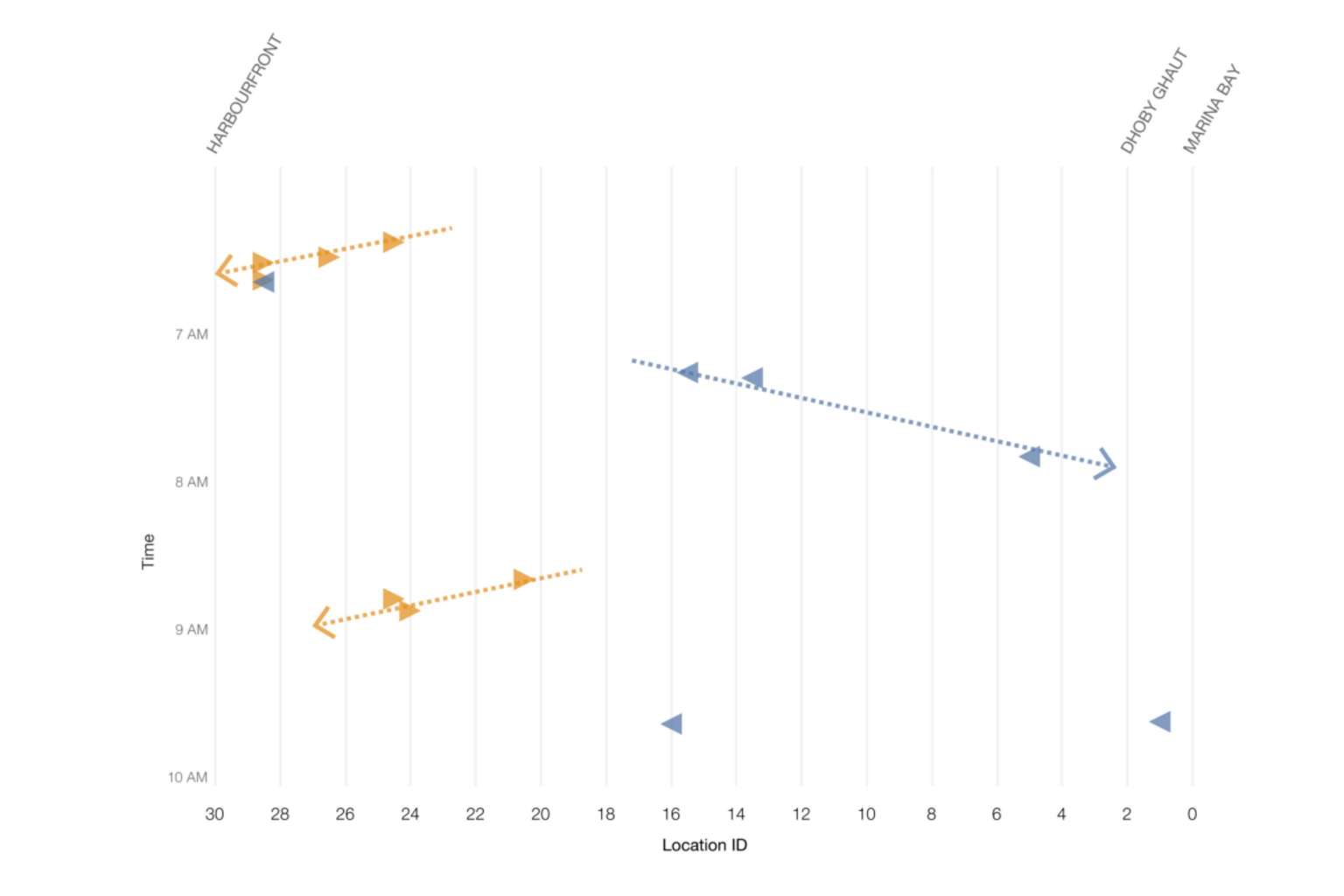GovTech data scientists' explanation of Circle Line investigation 'a fascinating account': PM Lee
Sign up now: Get ST's newsletters delivered to your inbox

A chart showing the direction of trains affected by disruptions.
PHOTO: SCREENGRAB FROM DATA.GOV.SG BLOG
Annabeth Leow
Follow topic:
SINGAPORE - The raw data was voluminous: lists of which trains in the Circle Line were stalling, where and at what times.
But plotting the information as a chart revealed a pattern. Trains seemed to be breaking down one after another, almost as though malfunctioning was contagious.
Data scientists from the Government Technology Agency of Singapore (GovTech), which was set up on Oct 1, have released a summary of the process that led them to identify the "rogue train" behind extensive train disruptions on the Circle Line earlier this year.
"When a train got hit by interference, another train behind moving in the same direction got hit soon after," data scientist Daniel Sim wrote in a post published on GovTech's blog on Thursday (Dec 1) afternoon.
"What we'd established was that there seemed to be a pattern over time and location: Incidents were happening one after another, in the opposite direction of the previous incident. It seemed almost like there was a 'trail of destruction'."
Mr Sim, who holds a computer science degree from the University of Cambridge and another from ETH Zurich, wrote that the team of data scientists hit upon a hypothesis: "Could the cause of the interference be a train - in the opposite track?"
This brainwave, when applied to the data set, pointed to the existence of one rogue train - which the data scientists identified by traipsing down to Kim Chuan Depot to review video footage of train movements.
Prime Minister Lee Hsien Loong and Defence Minister Ng Eng Hen have publicly commended the scientists who got to the bottom of the problem.
Mr Lee, in a Facebook post on Thursday, singled out the GovTech data scientists' explanation of their research as "a fascinating account, demonstrating close teamwork, sharp analysis, and a never-say-die attitude".
"Proud of the team's good work, and a big thank you to all the officers who worked so hard to crack the puzzle!" said Mr Lee, who has a bachelor's degree in mathematics and a diploma in computer science from the University of Cambridge.
He has described himself as deriving pleasure from computer programming and previously made headlines around the world for sharing the code to a Sudoku-solving algorithm that he wrote.
The disruptions were investigated by a multi-agency team that included engineers from the Land Transport Authority and train operator SMRT; a DSO National Laboratories team led by engineer Chian Teck Keong; Defence Science and Technology Agency engineers Mui Whye Kee, Cheng Heng Ngom and Benedict Koh; and GovTech scientists Lee Shangqian, Daniel Sim and Clarence Ng.

